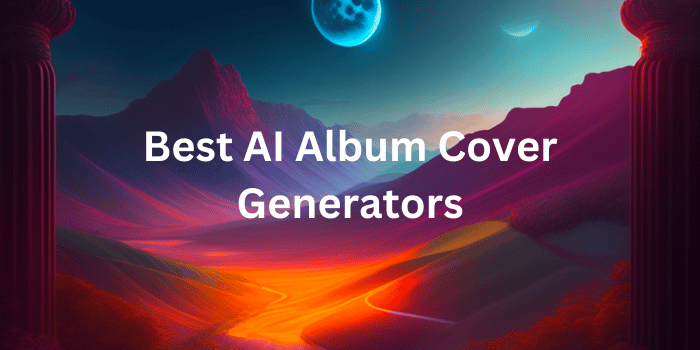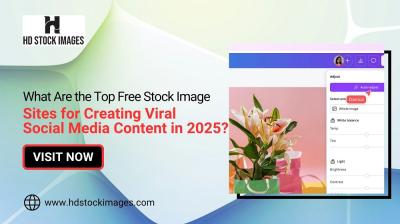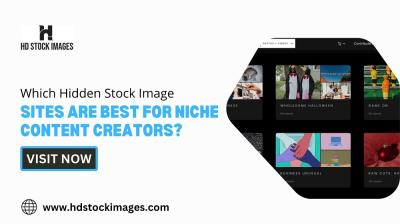AI image generators are at the forefront of a digital revolution, blending technology and creativity to produce stunning visuals. These generators employ artificial intelligence, particularly machine learning algorithms and neural networks, to create images that range from realistic photographs to artistic illustrations. Understanding the basics of how these tools operate can help users maximize their potential in various applications, including album cover design.
Core Components of AI Image Generators:- Machine Learning Algorithms: These are the backbone of AI image generators. They analyze vast amounts of data and learn patterns and styles to generate new images.
- Neural Networks: Mimicking the human brain's structure, neural networks process and interpret complex data sets. They are crucial for understanding and replicating artistic styles and details in images.
- Data Sets: AI systems require large data sets to learn from. These data sets include a diverse range of images and styles, enabling the AI to understand and replicate a wide array of visual elements.
How AI Image Generators Work:- Input Processing: Users provide input, often in the form of textual descriptions or base images. The AI then processes this input to understand the required output.
- Image Synthesis: The AI utilizes learned patterns and styles from its training data to start creating the image, often iterating several times to refine the results.
- Output Generation: The final image is produced, which can be further customized or refined by the user.
AI image generators are not just about automating image creation; they offer a new level of creativity and experimentation. For instance, in album cover design, these tools can provide:
- Unique and personalized cover art that stands out.
- Quick generation of multiple design options to choose from.
- The ability to easily modify and refine designs.
Applications in Album Cover Design:| Feature | Benefit |
|---|
| Customization | Enables unique, tailored designs that reflect the music's theme and mood. |
| Efficiency | Reduces the time and resources needed for design processes. |
| Innovation | Opens up new possibilities for creative and unconventional designs. |
In summary, AI image generators represent a significant leap in digital imagery, offering powerful tools for creative expression. Their application in album cover design, particularly, highlights their potential in merging artistic creativity with technological innovation.
Benefits of Using AI for Album Cover Creation
The integration of
AI in album cover creation brings a host of benefits, revolutionizing how artists and designers approach this crucial aspect of music presentation. From enhancing creativity to streamlining production, AI tools offer unprecedented advantages in designing album covers.
Key Benefits of AI in Album Cover Design:- Enhanced Creativity: AI algorithms can generate unique and innovative designs that might not be easily conceived by human minds. This leads to more creative, eye-catching album covers.
- Time Efficiency: AI tools can produce designs much faster than traditional methods, allowing for quicker turnarounds and the ability to meet tight deadlines.
- Cost-Effectiveness: By automating parts of the design process, AI reduces the need for extensive human labor, thereby cutting down on costs.
- Personalization: AI can tailor designs to align closely with the music’s style, theme, and artist’s persona, offering a high level of personalization.
- Variety of Styles: With access to vast datasets, AI can create album covers in a wide range of styles, from classic to contemporary, abstract to realistic.
- Accessibility: AI tools, especially web-based platforms, make high-quality design accessible to artists and producers who might not have the budget for professional designers.
Comparative Analysis: AI vs. Traditional Design| Aspect | AI Design | Traditional Design |
|---|
| Speed | Fast generation and iteration | Time-consuming processes |
| Cost | More cost-effective | Can be expensive, especially for custom designs |
| Creativity | Generates unique, diverse options | Limited by human creativity and current trends |
| Personalization | Highly customizable to music and artist | Depends on the designer's understanding and skills |
Utilizing AI for album cover creation not only simplifies the design process but also opens up a world of artistic possibilities. This technology empowers artists and producers to explore new creative dimensions, ensuring that the album cover accurately represents the music's essence and appeals to the target audience.
Step-by-Step Guide to Using the Free AI Image Generator
Creating an album cover using a
free AI image generator is a straightforward process. This guide will walk you through each step to help you harness the power of AI for your album artwork. Whether you're a musician, producer, or designer, following these steps will enable you to create stunning, professional-quality covers with ease.
Step 1: Accessing the AI Image Generator- Visit the website: Navigate to HDStockImages.com’s AI Image Generator.
- Select the AI image generator tool from the menu.
Step 2: Inputting Your Ideas- Describe your vision: Enter a detailed description of the album cover you envision in the text box provided. Be as specific as possible to guide the AI effectively.
- Include key elements like mood, color preferences, themes, and any specific imagery.
Step 3: Customizing Settings- Adjust settings: Choose from various options such as image style, resolution, and aspect ratio to match your specific needs.
Step 4: Generating the Image- Click on the ‘Generate’ button to start the AI process. The tool will use your description and settings to create the album cover.
Step 5: Reviewing and Refining- Analyze the generated image: Once the AI presents the initial design, review it thoroughly.
- If necessary, make adjustments to your description or settings and regenerate the image until you are satisfied.
Step 6: Downloading Your Album Cover- Once you are happy with the design, download the high-resolution version of your AI-generated album cover.
Tips for Best Results:- Be Specific: The more detailed your description, the better the AI can capture your vision.
- Experiment: Don’t hesitate to try different descriptions and settings to explore various design possibilities.
- Quality Check: Ensure the final image is of high quality and resolution, suitable for printing or digital use.
By following this step-by-step guide, you can efficiently utilize the
free AI image generator to create an album cover that is not only visually appealing but also truly represents your music.
Customizing Your AI-Generated Album Covers
Customization is key to ensuring that your AI-generated album cover not only looks professional but also uniquely represents your music. Understanding how to effectively customize your AI-generated designs can elevate your album's visual appeal and connect more deeply with your audience. Here are steps and tips for customizing your AI-generated album covers.
Understanding the Customization OptionsAI image generators typically offer various customization options to fine-tune the final design. These may include:
- Color Adjustments: Modifying color schemes to match the mood or genre of the music.
- Style Variations: Choosing between abstract, realistic, or other artistic styles.
- Text Overlays: Adding the album title, artist name, or other text in different fonts and formats.
- Resolution and Size: Adjusting the image resolution and dimensions for various uses, such as digital platforms or physical prints.
Steps for Customizing AI-Generated Covers- Review the Initial Design: Examine the first draft generated by the AI. Note elements you like and aspects you want to change.
- Modify the Input: Adjust your initial description or parameters based on the aspects you want to alter. This could involve changing keywords related to mood, style, or color.
- Experiment with Variations: Don't hesitate to generate multiple versions to compare different styles or adjustments.
- Apply Final Touches: Once you have a design close to your vision, fine-tune details like brightness, contrast, and saturation if the tool allows.
- Add Text Elements: Use the text overlay feature to insert and customize the album title and artist name. Ensure the text complements the overall design.
- Final Review: Carefully review the customized cover for any needed adjustments and ensure it aligns with your artistic vision.
Tips for Effective Customization:- Consistency with Music Theme: Ensure the cover reflects the theme and feel of your music for brand consistency.
- Attention to Detail: Pay close attention to minor details as they can significantly impact the overall aesthetic.
- Feedback: Don’t hesitate to seek feedback from others to gain different perspectives.
Customizing AI-generated album covers is a blend of art and technology. By leveraging the power of AI while infusing your personal artistic touch, you can create an album cover that is both visually stunning and deeply representative of your music.
Case Studies: Successful AI-Generated Album Covers
Examining successful case studies of AI-generated album covers provides insights into the effectiveness of this technology in the music industry. These examples highlight how artists have leveraged AI to create visually compelling and conceptually fitting album art.
Case Study 1: 'Electro-Synth Revival'- Artist: Neon Dreamers
- Genre: Electronic/Synthwave
- Concept: The band wanted an album cover that captured the retro-futuristic essence of their music.
- AI Approach: Used vibrant neon colors and abstract geometric shapes, emphasizing a digital, 80s synthwave aesthetic.
- Outcome: The cover was well-received for its nostalgic yet modern look, perfectly encapsulating the album's theme.
Case Study 2: 'Acoustic Serenity'- Artist: Lily Harmon
- Genre: Acoustic/Folk
- Concept: Lily sought a design that reflected the calm and introspective nature of her acoustic songs.
- AI Approach: Generated a serene landscape with soft, earthy tones and a solitary figure, creating a sense of peace and solitude.
- Outcome: The album cover was praised for its emotional resonance and ability to convey the mood of the music.
Case Study 3: 'Urban Beats'- Artist: DJ Rhythmix
- Genre: Hip-Hop/Urban
- Concept: The artist wanted a cover that represented the energetic and dynamic nature of urban hip-hop.
- AI Approach: Created a vibrant, graffiti-inspired design with bold colors and urban imagery.
- Outcome: The cover effectively attracted the target audience, resonating well with the urban hip-hop scene.
Key Takeaways from These Case Studies:- Alignment with Music Genre: Each case shows how AI can tailor designs to a specific music genre, enhancing the album's market appeal.
- Creative Flexibility: AI’s versatility in style and imagery allows for a wide range of creative expressions.
- Target Audience Engagement: AI-generated covers can effectively engage the intended audience by visually representing the music's essence.
These case studies demonstrate that AI-generated album covers are not only a viable option for artists but can also play a crucial role in defining and enhancing an album's visual identity.
Tips and Best Practices for AI Image Generation
Creating stunning album covers using
AI image generation involves more than just feeding text into a generator. To get the most out of this technology, there are specific tips and best practices you should follow. These guidelines will help you achieve high-quality, relevant, and visually appealing results that align with your artistic vision.
1. Clear and Detailed Descriptions- Provide the AI with a detailed, clear description of what you're looking for. Include specifics about themes, colors, mood, and any other important elements.
- Use descriptive language and be as precise as possible to guide the AI towards your desired outcome.
2. Understand the Capabilities and Limitations- Be aware of what AI image generators can and cannot do. While they are powerful tools, they have limitations in understanding abstract concepts.
- Experiment with different inputs to understand how changes in your description affect the output.
3. Iterative Approach- Don't expect to get the perfect result on the first try. It often takes several iterations to refine the output.
- Make adjustments to your inputs and experiment with different settings to see how they influence the final image.
4. Keep an Eye on Image Rights and Usage- Understand the copyright and usage rights associated with images generated by AI. Ensure that you have the rights to use the images commercially, especially for album covers.
- Check the terms of service of the AI image generator platform to avoid legal issues.
5. Quality Checks- Review the generated images for quality and resolution, especially if they will be printed.
- Look out for any anomalies or artifacts that might have been introduced during the generation process.
6. Incorporating Feedback- Get feedback on the generated images from fans, friends, or team members. Different perspectives can offer valuable insights.
- Use this feedback to make further refinements.
7. Stay True to Your Artistic Vision- While AI offers exciting possibilities, ensure that the final product aligns with your artistic identity and the message of your music.
- Use AI as a tool to enhance your creativity, not replace it.
By following these tips and best practices, you can maximize the potential of AI image generators to create album covers that are both innovative and true to your artistic vision.
Future of AI in the Creative Industry
The integration of artificial intelligence in the creative industry is not just a fleeting trend but a paradigm shift that is reshaping how art is created, distributed, and perceived. As we look to the future, several key developments and potential impacts of AI in the creative sector are emerging.
1. Enhanced Collaborative Possibilities- AI is expected to evolve as a collaborative tool, augmenting human creativity rather than replacing it.
- Artists and designers will increasingly use AI to explore new creative avenues, test ideas, and push the boundaries of traditional practices.
2. Democratization of Art Creation- AI tools will make complex artistic processes more accessible, allowing more individuals to engage in creative pursuits without needing extensive training.
- This democratization could lead to an explosion of creative content, with diverse voices and styles emerging.
3. Personalized and Adaptive Art- AI systems will be able to create highly personalized art by learning from user interactions and preferences, leading to more engaging and immersive experiences.
- Adaptive AI could produce dynamic artworks that change in response to their environment or audience.
4. Ethical and Legal Considerations- The rise of AI in creative processes will necessitate discussions and policies around copyright, originality, and intellectual property.
- There will be ethical considerations regarding the authorship of AI-generated content and its impact on human artists.
5. New Forms of Art and Expression- AI is likely to give birth to entirely new art forms and means of expression, blending traditional techniques with futuristic concepts.
- Interactive and immersive art experiences, such as virtual reality and augmented reality, will become more prevalent and sophisticated.
6. Impact on Art Education and Training- Art education might undergo significant changes, incorporating AI tools and techniques into the curriculum.
- Future artists and designers may need to be versed not only in traditional art forms but also in the use of AI technologies.
The future of AI in the creative industry promises a blend of technological innovation and artistic expression, leading to a more diverse, accessible, and dynamic art world. While challenges and uncertainties remain, the potential for positive transformation and new creative horizons is immense.
FAQ
Q1: What is an AI Image Generator?
A1: An AI image generator is a tool that uses artificial intelligence algorithms to create images based on textual descriptions or other forms of input. It interprets the given information and generates visual content accordingly.
Q2: How does AI Image Generation work for album cover creation?
A2: For album covers, the AI analyzes the text input related to the theme, mood, or concept of the album and generates an image that visually represents these ideas. This process involves complex algorithms that interpret and visualize creative concepts.
Q3: Is AI-generated artwork unique?
A3: Yes, AI-generated artwork is typically unique, as the AI processes input and creates images based on a vast array of factors, resulting in one-of-a-kind artwork. However, uniqueness can also depend on the specificity of the input provided.
Q4: Can I use AI-generated images for commercial purposes?
A4: Generally, AI-generated images can be used for commercial purposes, but it's important to check the terms of service of the AI image generator platform and ensure that you have the rights for commercial usage.
Q5: Do I need any special skills to use an AI image generator?
A5: No special skills are required to use most AI image generators. Basic knowledge of providing clear and detailed descriptions for your desired outcome is usually sufficient.
Q6: How can I ensure the AI creates an image that aligns with my vision?
A6: To ensure alignment with your vision, provide the AI with detailed and specific descriptions, experiment with different inputs, and be prepared to iterate on the results until you achieve your desired outcome.
Q7: Are there any ethical considerations in using AI for creative purposes?
A7: Yes, ethical considerations include issues related to the originality of AI-generated content, intellectual property rights, and the impact of AI on traditional creative professions.
Q8: What is the future of AI in the creative industry?
A8: The future of AI in the creative industry includes enhanced collaborative opportunities, the democratization of art creation, development of new art forms, and the need for ethical and legal frameworks to address emerging challenges.
Conclusion
The advent of AI in the realm of image generation, particularly for applications like album cover creation, marks a significant evolution in the intersection of technology and art. As we have explored, AI image generators offer a plethora of benefits, including efficiency, customization, and the ability to bring novel concepts to life. The ease of use of these tools makes them accessible to artists and creators of all skill levels, thereby democratizing the process of artistic creation.However, it's important to navigate this new landscape with an awareness of the ethical and legal implications, ensuring that the use of AI in art respects intellectual property rights and fosters originality. Looking forward, the integration of AI in the creative industry is set to expand, offering exciting possibilities for personalized, adaptive art and the emergence of new forms of expression.In conclusion, AI image generation, especially for album covers, is not just a technological advancement but a new canvas for creative expression. It empowers artists, designers, and musicians to explore uncharted territories of creativity. As we embrace these tools, we step into a future where art and technology coalesce, opening doors to endless imaginative possibilities.

 admin
admin








